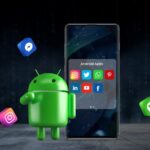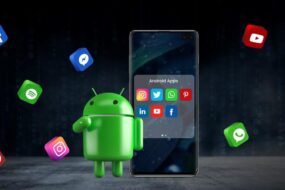
Apple’s expensive Vision Pro augmented reality/virtual reality (AR/VR) headset has struggled to attract developers.
According to a report from The Wall Street Journal, the flow of new apps for the Vision Pro app store has slowed dramatically. After an initial wave of hundreds of apps in the first two months following the headset’s release, the number of new apps has dropped significantly, with only 10 new apps introduced in September.
The Journal cited analytics firm Appfigures, revealing that about 1,770 apps are available in the Vision Pro app store. However, only 34% of these are designed specifically for the Vision Pro, with most being existing Apple apps adapted for the headset.
The pace of app growth for the Vision Pro is notably slower than for other Apple products. Within a year of the iPhone’s launch, the App Store had 50,000 apps, and the Apple Watch had 10,000 apps just five months after its debut. However, the Journal also pointed out that the iPhone and Apple Watch had lower price points and broader consumer appeal than the Vision Pro.
Creating apps for the Vision Pro is a more complex task. As Timothy Bates, a professor at the University of Michigan-Flint College of Innovation & Technology, explained, developing for the Vision Pro involves moving beyond traditional 2D app design into an immersive, 3D interactive environment. This requires developers to rethink user interfaces, experiences, and interactions in spatial computing, which presents both challenges and exciting opportunities.
A Key Challenge: The “Horse and Cart” Problem
Bates suggested that Apple’s struggle to attract developers is typical for new platforms, especially one as advanced as the Vision Pro. Developers are reluctant to invest heavily when the initial user base is small, and creating apps for mixed reality demands a shift in how apps are designed.
Anshel Sag, a senior analyst at Moor Insights & Strategy, added that smaller developers with limited budgets are hesitant to invest in the Vision Pro, given that the market isn’t yet ready for profitable monetization. However, for larger developers, the platform offers an opportunity to familiarize themselves with Apple’s spatial computing tools and prepare for future, more affordable iterations.
Mark N. Vena, president at SmartTech Research, noted that the relatively low sales volumes of the Vision Pro make it less appealing to developers, who typically gravitate toward Apple products due to their large user bases. Rob Enderle, president of the Enderle Group, further explained the classic “horse and cart” problem, where developers are hesitant to create apps without a critical mass of users, and users are reluctant to buy the hardware without compelling apps.
To overcome this hurdle, Enderle suggested that Apple may need to fund the development of key apps, something the company has been reluctant to do in the past.
Will Apple Fund Developers?
Vena speculated that Apple may eventually provide funding to developers to ensure that high-value, marketable apps are available for the Vision Pro. He believes Apple will collaborate with prominent developers to ensure these apps come to market, likely behind the scenes, in a way they didn’t need to with the iPhone and iPad.
Jim Squires, an XR and games consultant, added that while Apple is playing the long game with Vision Pro, the company should consider more actively funding developers, such as through a Vision Pro Creator Fund, to encourage developer interest and engagement.
Bates agreed, emphasizing that Apple has previously invested in developers for new platforms, and doing so for the Vision Pro could provide the ecosystem the headset needs. “To ensure a thriving ecosystem, Apple must support developers so they can take risks and innovate without the financial strain,” he said.
“By offering development grants or partnering with established AR/VR developers, Apple could give the Vision Pro the boost it desperately needs,” he argued. “To foster a thriving ecosystem, developers must be able to take risks and innovate without the burden of financial concerns.”
Success Hinges on Ecosystem
Enderle argued that funding developers is typically essential for the success of a device in this category. “Microsoft made significant investments in apps for both Windows 95 and the Xbox, and both were successful,” he pointed out.
However, Sag is skeptical that Apple will open its purse to developers. “While it should fund developers, Apple won’t because it believes it has the most premium platform and a loyal customer base willing to spend,” he explained.
“I think Apple should have provided some seed funding to smaller developers before the headset launched, but at this point, it has decided to let market forces play out,” he added.
Another way to encourage developers to build apps for the Vision Pro, according to Jitesh Ubrani, research manager at IDC, would be to adopt more open standards like OpenXR and WebXR. “These standards would make cross-platform development easier and give developers access to a wider range of headsets,” he said.
Ubrani also suggested that Apple could consider creating a more affordable version of the headset, as the $3,500 price tag limits the pool of potential customers for a device as niche as a mixed reality headset.
Bates acknowledged that the Vision Pro has vast potential but emphasized that its success depends heavily on the surrounding ecosystem. “Apple needs to make sure developers are incentivized to create groundbreaking apps that fully demonstrate the device’s capabilities,” he stated. “It’s also important to manage expectations—this is a forward-thinking product that will take time to mature, both in hardware and software.”
“Apple is making a bold leap into the future with the Vision Pro,” Bates concluded, “but it will need to nurture the developer ecosystem and likely release more accessible versions to ensure widespread adoption.”







